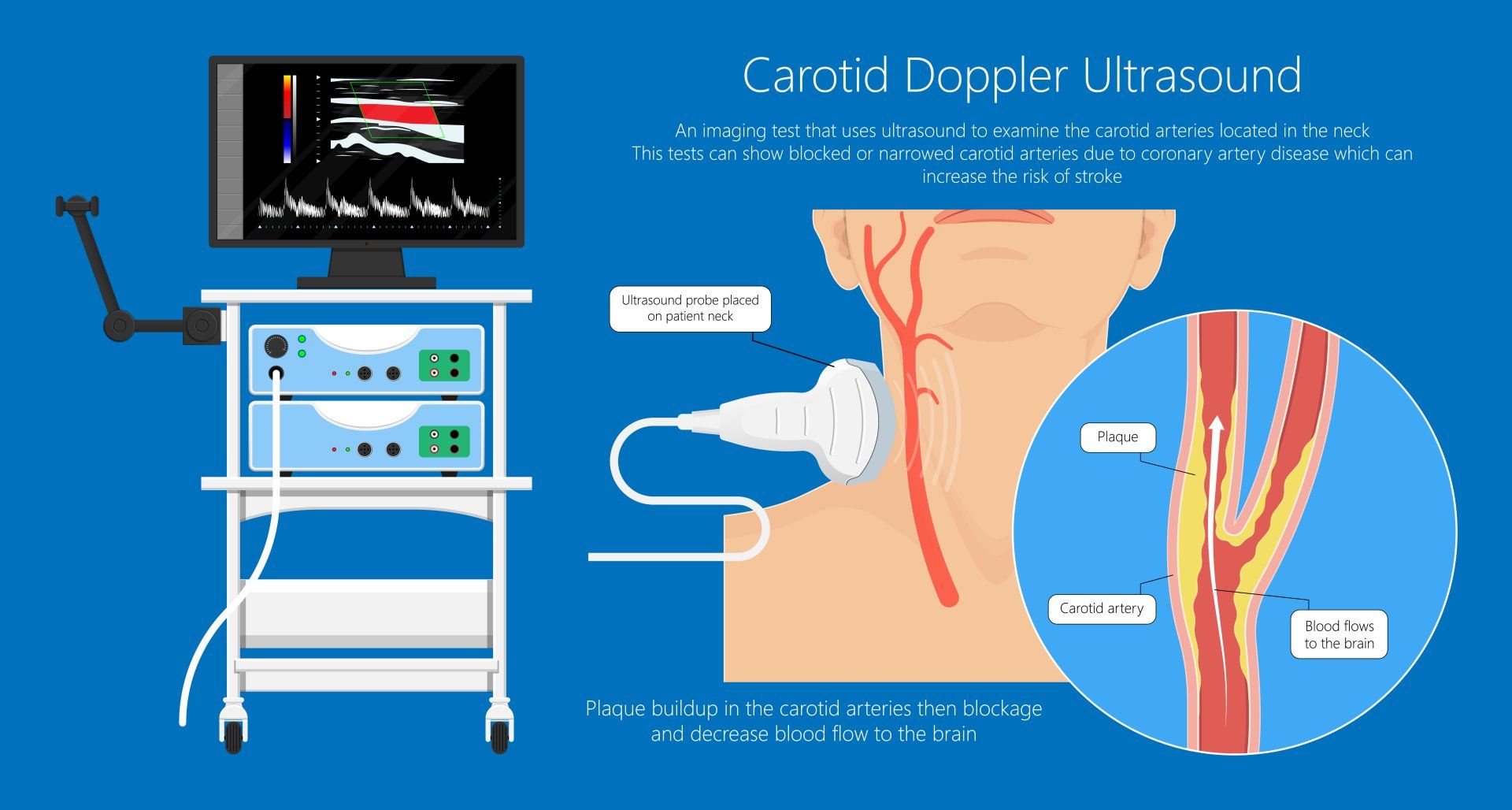Artery Ultrasound Tests

Ankle Brachial Index (ABI)
A test used to check for the presence of peripheral arterial disease (PAD). The test compares blood pressure at the ankle level with blood pressure in your arm. The ABI is the blood pressure in your leg divided by the blood pressure in your arm. Your blood pressure should be the same in your arms and legs. If it's lower in your legs, it means you have a narrowing or blockage of the arteries in your leg(s).
- Indications for test: Symptoms of pain in the legs with walking, pain in the legs at rest with diminished pulses, wounds or ulcers in the legs or feet.
Arterial Duplex Ultrasound/Scan
A test used to check for narrowing in the arteries. It combines traditional ultrasound pictures or the arteries and a doppler ultrasound which records the velocity of blood flowing through the arteries. If the flow is very fast, it means there is a narrowing in the artery. A complete blockage can also be diagnosed in which there is no flow seen in the artery.
- Indications for test: To monitor stents or bypass grafts in the legs that may be narrowing over time, to monitor the size of aneurysms of the popliteal or common femoral arteries, to look for blood clots or blockages in the arteries in the arms or legs.
Abdominal Aortic Duplex/Ultrasound
A test used to screen for an abominal aortic aneurysm (AAA). It combines ultrasound measurements of your abominal aorta (main artery in the abdomen that carries blood to the legs) or iliac arteries (pelvic arteries). An abdominal aorta larger than 3 cm in diameter is considered aneurysmal.
- Indications for test: Personal or Family history of AAA, to periodically check the size of a known AAA, or age greater than 65 with a smoking history.
Carotid Duplex/Ultrasound
A test used to check for narrowing or blockage in the carotid arteries in the neck that supply blood to the brain. It combines traditional ultrasound pictures of plaque within the arteries and doppler ultrasound which records the velocity of blood flowing through the arteries. If the flow is very fast, it means there is narrowing in the artery. Narrowing of the internal carotid artery is one of the most common causes of a stroke. Most often, carotid artery stenosis doesn't cause symptoms until a minor or major stroke occurs.
- Indications for test: Symptoms of dizziness, sudden vision changes, speech difficulty (slurring or difficulty understanding or getting words out), facial drooping, or one sided leg or arm weakness.
Renal Duplex/Ultrasound
This is a non-invasive test used to check for narrowing in the arteries that supply the kidneys. It also checks the flow of blood within the kidneys and the size of the kidneys.
- Indications for test: Poorly controlled high blood pressure (hypertension), to monitor a renal artery stent that has been placed in the past to make sure the stent is not narrowing, or poor kidney function.


